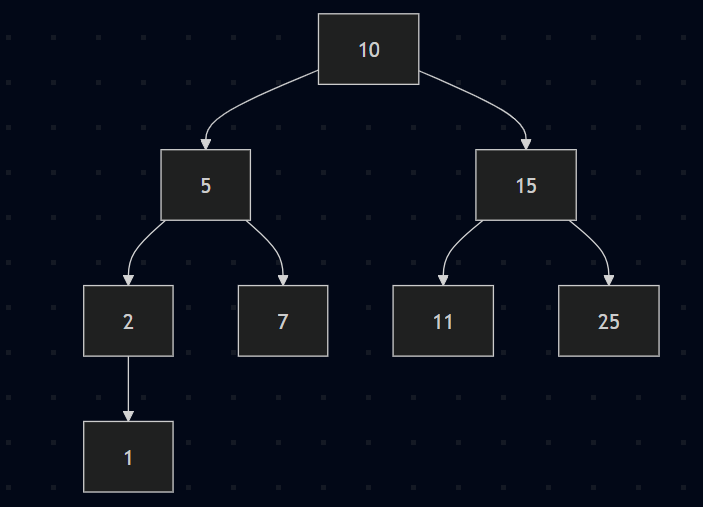Problem:
Implement a Preorder Traversal of a binary tree without using recursion, and print the elements.
-
Use an iterative approach (do not use recursive function calls).
-
Do not store elements in a linked list or array; just print the elements in preorder order.
Note: If you want inorder traversal without recursion. Click here.
If you want postorder traversal without recursion. Click here.
My Approach:
First let us understand what is preorder traversal.
Preorder traversal of a binary tree means visiting nodes in the following order:
-
Root node (Access it or Print it)
-
Left subtree
-
Right subtree
If we are using recursion, then it is very easy to do. The following code snippet shows how it works :
preorder(node) {
if(node == null) return;
print(node.data);
preorder(node.left)
preorder(node.right)
}
But in our problem, we should not use recursion. We should use iterative approach for this.
So, I'm using stack data structure here.
Okay! Now I will say how a stack helps us to perform preorder traversal.
- First initialize a stack and push the root node into the stack.
- Now until the stack is not empty, do the following :
- Pop the top node from the stack.
- Print its data
- Push its right child onto the stack if it exists.
- Push the left child onto the stack if it exists.
- For large trees, we may get stack overflow if we use recursion. But iteration helps us in that case.
- At the same time, it is easy to implement using simple push and pop operations.
Let us consider a binary tree
For the above binary tree, the pre order traversal is given as
10 - 5 - 2 - 1 - 7 - 15 - 11 - 25
Lets do step by step process to solve.
Step 1:
Initialize the stack and push the root node (10) onto the stack.
Stack: [10]
Step 2:
Pop 10 and print 10. Now push right child first (15) of node 10 onto the stack, then left child (5).
Stack: [15, 5]Step 3:
Pop 5 and print 5. Now push right child (7) of node 5 onto the stack, then left child (2).
Stack: [15, 7, 2]Output: 10 - 5 -
Step 4:
Pop 2 and print 2. Now push right child (none) of node 2 onto the stack, then left child (1).
Stack: [15, 7, 1]Output: 10 - 5 - 2 -
Step 5:
Pop 1 and print 1. Here node 1 has no children. So, nothing is pushed.
Stack: [15, 7]Output: 10 - 5 - 2 - 1 -
Step 6:
Pop 7 and print 7. Here node 7 has no children. So, nothing to push.
Stack: [15]Output: 10 - 5 - 2 - 1 - 7 -
Step 7:
Pop 15 and print 15. Now push right child (25) of node 15 onto the stack, then left child (11).
Stack: [25, 11]Output: 10 - 5 - 2 - 1 - 7 - 15 -
Step 8:
Pop 11 and print 11. Here 11 has no children. So, nothing to push.
Stack: [25]Output: 10 - 5 - 2 - 1 - 7 - 15 - 11 -
Step 9:
Pop 25 and print 25. Here 25 has no children. So, nothing to push.
Stack: [ ] emptyOutput: 10 - 5 - 2 - 1 - 7 - 15 - 11 - 25 -
Conclusion
This is the preorder traversal of a binary tree without using recursion. I used a stack to visit the nodes in the order: root - left - right.
Key Points:
- Push the right child first, then the left child so the left node is accessed first before the right.
- Using a stack avoids stack overflow, which can happen with recursion in large trees.
- Each node is visited once, so the time complexity is O(n) and space complexity depends on the tree height O(h).
- Works for any binary tree and can be done in JavaScript, Python, C++, or Java. It works in C too, but we have to implement the stack ourself.
This method is simple, safe for large trees, and easy to understand.
Which approach do you like more - iterative or recursive? Comment your thoughts.
If you have any doubts, comment below!

Comments
Post a Comment